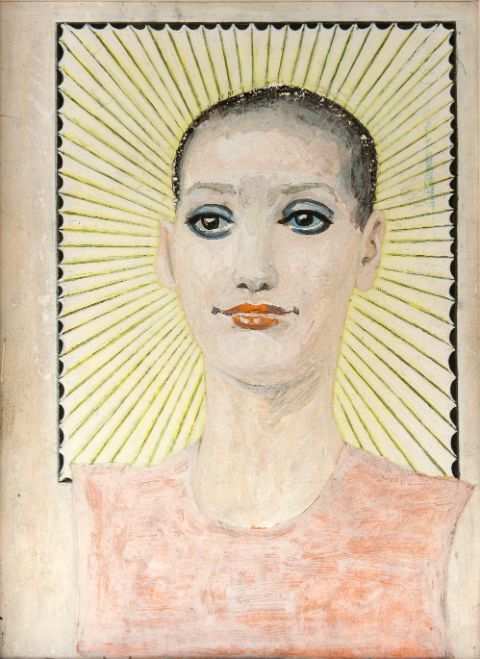Valentina Rusu-Ciobanu

Valentina Rusu-Ciobanu, Robot III (1969). Courtesy Lica Sainciuc family, image: Arbor Institute for Culture, photo: Iurie Foca
Despite facing ideological pressure throughout most of her artistic career, Moldovan artist Valentina Rusu-Ciobanu consistently remained faithful to her distinct and independent vision. Emerging in Romania’s cultural milieu between the First and Second World Wars, she developed an unmistakable artistic language that stood out in the face of the socialist realist constraints imposed by the Soviet regime in Moldova. Drawn to experimentation, she continually evolved her style, transitioning from realism to embrace more expressionist, naive, photorealist, and metaphysical styles. Humour and the grotesque frequently manifested in her work, serving as a response to the cliches imposed by the establishment. Moon rover is her playful take on the topic of technological and scientific progress, while Robot III makes an ironic comment on life’s programmed routine and the things people do automatically. Sincerity was also a central quality of her oeuvre. Included in the exhibition is a series of paintings featuring one-storey houses that resulted from her interest in the simple beauty and authenticity of the quotidian. Rusu-Ciobanu believed that, to maintain the inquisitive candour of childhood and a fresh outlook, one must embrace aspects of naivety in their work.
Works in the exhibition:
Moon rover (1971), acrylic and tempera on canvas, 126.5 × 109.3 cm
Composition with quince branch (1968–69), tempera, marker, bronze, pencil on cardboard, 79.5 × 49.5 cm
Robot III (1969), tempera on cardboard, 49.5 × 36.5 cm
Fence, house and three trees (1968–69), oil on cardboard, 54 × 40.5 cm
Landscape with tree (1968–69), oil on cardboard, 49.7 × 40.5 cm
Red gate (1960), oil on cardboard, 41.7 × 50.5 cm
Gate (1968–69), oil on cardboard, 43 × 69.9 cm
House with red roof (1968), oil on cardboard, 49.5 × 37.7 cm
Courtesy of the Lica Sainciuc family